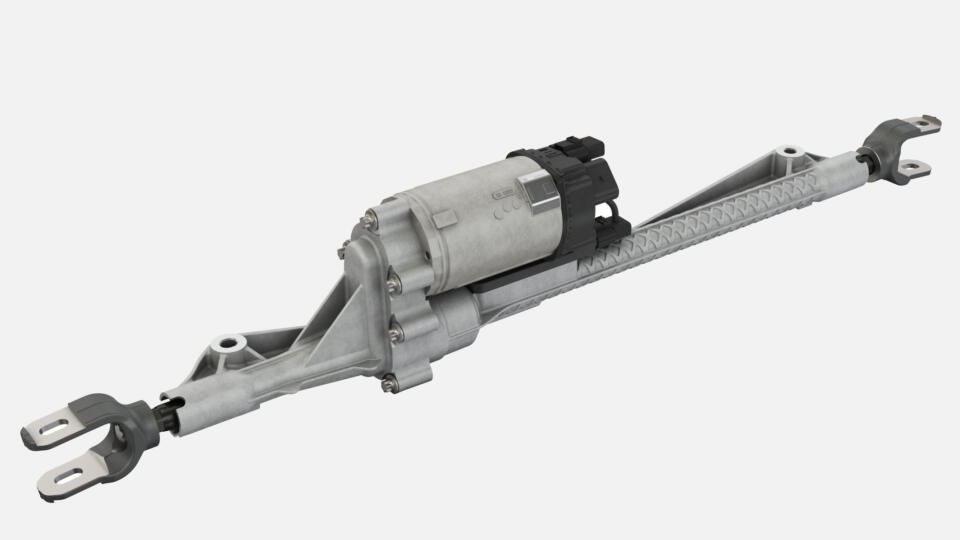
Smartly steered
Schaeffler successfully launched its mechatronic intelligent Active Roll Control system (iARC) back in 2015. “The lessons we learned from that process flowed directly into the development of mechatronic Rear Wheel Steering”, said Dr. Keiwan Kashi, President Business Unit Mechatronic Systems at Schaeffler. “By combining our expertise in mechatronics with our core competencies in the industrialization of mechanical and mechatronic components, we created a highly efficient product that can be tailored to customer requirements.” The mechatronic iRWS unit improves ride comfort and safety which offers several key benefits in today’s rapidly urbanizing world. By turning the rear wheels in the opposite direction to the front wheels, it reduces the turning radius, significantly increasing maneuverability in tight spaces, such as when parking in busy urban settings. Moreover, the rear axle’s assistive steering action enhances handling, stability and ride comfort and improves vehicle safety. Schaeffler’s Rear-Wheel Steering system uses lightweight technologies and features a maximum overall weight of just eight kilograms. At the heart of the system is a planetary roller gear that performs a self-locking function, ensuring that the rear wheels do not change direction without steering input from the driver. The planetary screw drive also delivers superior efficiency. Moreover, the system’s design is acoustically optimized, making it particularly well suited for use in low-noise electric vehicles.
Bosch steering control unit supports safer driving
Bosch’s contribution to the partnership is the steering control unit, an integrated module comprising control electronics, an electric motor and software. Scalable and modular in design, this unit is fundamental to many of the driver-assistance functions in Schaeffler’s new rear-axle steering system. Already a proven performer, the steering control unit has been successfully implemented in millions of front-axle steered vehicles. It features Bosch security for robust protection against cyber attacks. Functions and updates are supported by over-the-air (OTA) technology. “Our third-generation steering control unit was launched just last year and is already doing very well in the market for front-axle steering control systems,” said Dr. Stefan Waschul, head of passenger car steering systems at Robert Bosch Automotive Steering. “Under this partnership, we will apply our expertise in this area to rear-axle steering systems and contribute the wealth of experience and technical know-how in software and E/E architecture that has made us the market leader in steering control systems.”
Intelligent Rear Wheel Steering technology is a key milestone in our journey to becoming the technology partner of choice for mechatronic chassis systems
Matthias Zink, CEO Automotive Technologies at Schaeffler
With decades of experience in software development and steering control, Bosch has already successfully partnered this technology in numerous customer applications. Based on signals from the steering wheel torque sensor, the steering control unit’s integrated electronic controller calculates the optimal steering assist, which is then delivered by the integrated electric motor. In addition to the torque applied to the steering wheel by the driver, the calculation takes into account numerous other vehicle parameters.
Benefits of the mechatronic rear wheel steering system

Benefit: Agility
The space available to automobiles in the world’s steadily growing big cities is becoming increasingly scarce. That’s why cars have to become more agile. The mechatronic Rear Wheel Steering system assists in enhancing agility. By turning the rear wheels in the opposite direction to the front wheels at low speed, it reduces the turning radius and helps drivers pull into parking spaces.

Benefit: Driving Stability
At higher speeds (from approx. 60 km/h / 37.3 mi), the mechatronic Rear Wheel Steering system turns the rear wheels in the same direction as the front wheels. The equidirectional steering assist enhances stability, handling and ride resulting in higher safety. Moreover, sporty drivers get to enjoy a higher level of driving dynamics.


